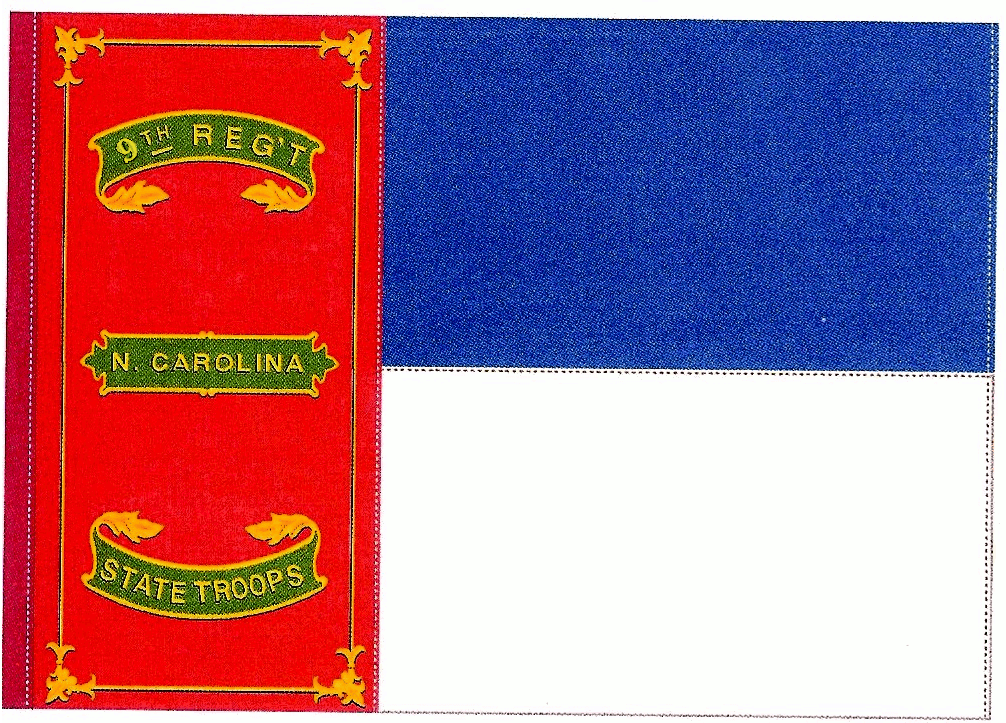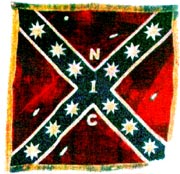On May, 20, 1861 the legislative of North Carolina passed a bill for the creation of a State Flag. Accepted was the proposal of William Jarl Browne. In his design the flag should contain a vertical red field with a white, five pointed star in center. Above the star there should be the date of the Mecklenburg Declaration, May, 20th, 1775. Below the star it should be the date of secession, May, 20th, 1861. Horizontal to the red field the flag had a single blue field (above) and a single white field (below) of the same size. The length should be 1/3 more than the width. This flag is commonly referred to as the NC State Secession Flag.

Regimental flags
The regimental flags received by the first ten regiments were not completly
in this style. They had different paintings on front and reverse side.
On the frontside there were 3 horizontal painted green, gold framed scrolls
with the regiments' designation in the red field. The ribbons
were enclosed by a golden painted frame. On the reverse side there was
a painted six pointed silver star in center of the red field, above the date
of the Mecklenburg Declaration, May 20th, 1775, and the date of secession
below, May, 20th, 1861, on green painted gold framed horizontal
scrolls. Like on the front side, a golden frame enclosed star and
scrolls. The width of the flags were 38 inches, and the length 62
inches. Length of the red field and width of the blue and white was 19
inches. The flags were made of silk. They were given to the
regiments in August 1861.
Today 3 flags of this pattern are still
existing, the flags of the 2nd, 3rd and 8th North Carolina State Troops.
These flags are identical in design, only the regimental designations are
different. It can be taken as proof that the 1st North Carolina
Cavalry received this flag with the designation 9th Reg't N. Carolina
State Troops. The flag was never surrendered to the enemy. The flag,
shown on the picture is now in the North Carolina Museum of History in
Raleigh, NC.

 © Copyright N.C. Museum of History
© Copyright N.C. Museum of History
Battleflags

On morning of April, 6, 1865, a small party of federal soldiers, dressed as Confederates, captured General Barringer and his guard. Together with the General this flag was captured also.
Remarkable is that this flag, although used by cavalry, has with 47x47 inches the size of an Infantry Battle Flag of the Army of Northern Virginia. The blue cross bars are 5inches wide, the white stripes are 0.5 inches. The flag has 13 white applied five pointed stars on both sides, at 3.25 - 3.5 inches in diameter. The white frame arround the flag has a width of 2 inches. The flag is made of so called Bunting, with only the white parts being cotton. The flag is now in the North Carolina Museum of History in Raleigh, NC.

© Copyright N.C. Museum of History.
Company Flags
Company F, 1st N.C. Cavalry (Cabarrus Rangers)


